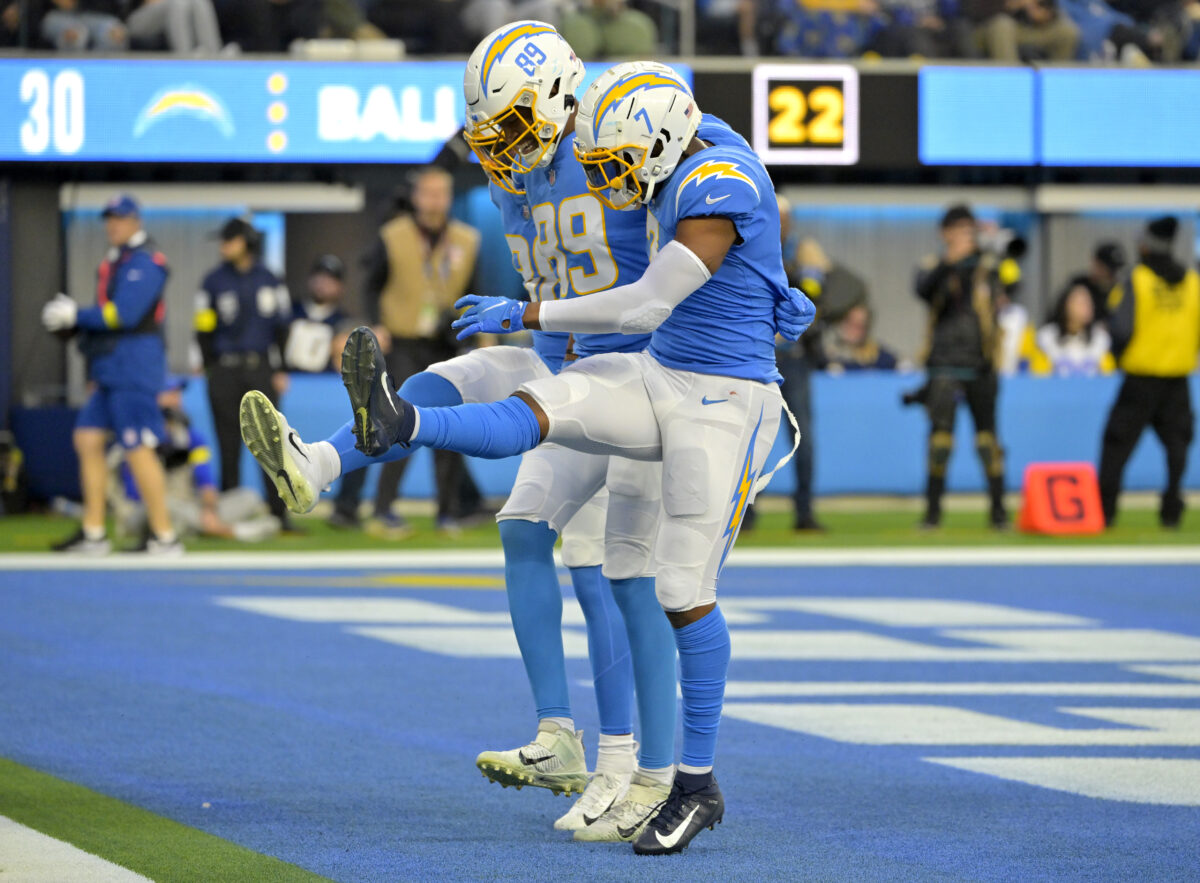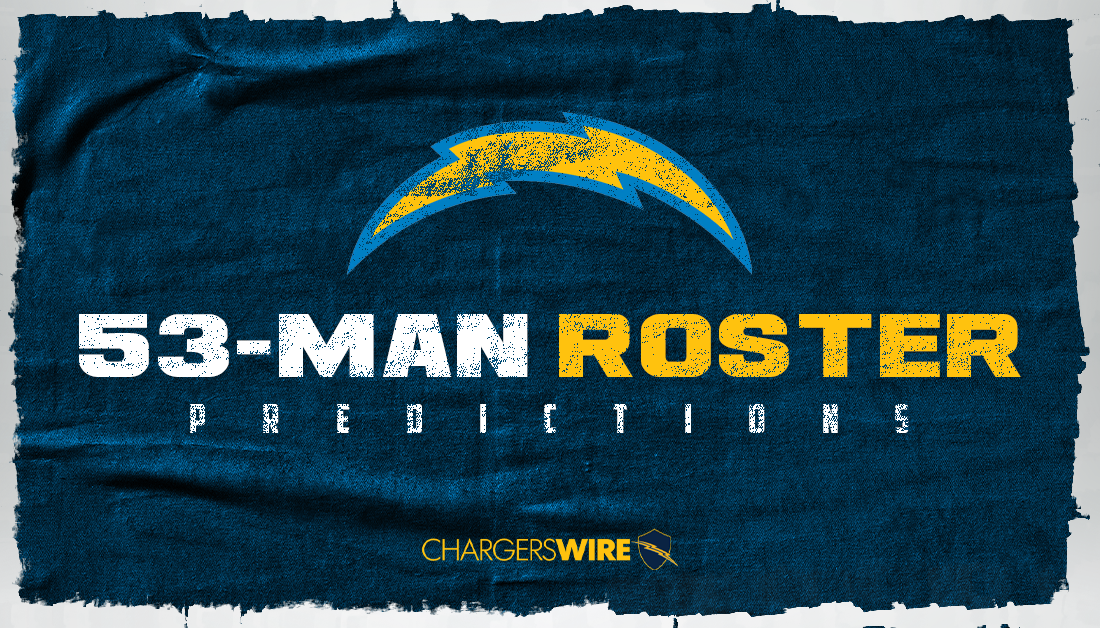The Chargers’ second preseason game against the Cowboys shed more light on some position battles.
Here’s an attempt at a roster projection a week before cut day:
Quarterback (3): Justin Herbert, Easton Stick, Chase Daniel
There are no changes here, although Tom Telesco said on Saturday’s broadcast that the team will carry three quarterbacks. Stick and Daniel are still competing for the backup job.
Running back (4): Austin Ekeler, Joshua Kelley, Isaiah Spiller, Larry Rountree III
Telesco also indicated that the team will keep four running backs and use all of them, which means Rountree is back on the menu. Spiller suffering an ankle injury on Saturday will also help Rountree’s chances of making the initial roster.
Fullback (1): Zander Horvath
No change here; Horvath still seems like the favorite over incumbent Gabe Nabers.
Wide receiver (5): Keenan Allen, Mike Williams, Joshua Palmer, DeAndre Carter, Jalen Guyton
It causes me physical pain to leave off preseason superstar Michael Bandy here, but the numbers are not in his favor. Keeping three QBs and four running backs and potentially having to carry a fourth tight end make it seem like a foregone conclusion that the sixth wide receiver is not a spot on this roster. So what more does Bandy have to show to change that seems unknowable at this point?
Tight end (4): Gerald Everett, Donald Parham Jr., Tre’ McKitty, Hunter Kampmoyer
Speaking of four tight ends, I think Kampmoyer will squeak through, initially, because Parham and McKitty have both missed time in training camp with injuries. If one or both of them aren’t ready to go by Week 1, TE4’s place on the roster is assured. Kampmoyer has also been working with the starting units on special teams, which could aid his case.
Offensive line (9): Rashawn Slater, Matt Feiler, Corey Linsley, Zion Johnson, Trey Pipkins, Storm Norton, Jamaree Salyer, Brenden Jaimes, Will Clapp
Pretty chalk here, although Ryan Hunter continues to gain ground on Jaimes on Clapp. I think those three are battling for two spots. Telesco’s teams have been notoriously reluctant to give up on draft picks, which makes me believe Jaimes is safe despite arguably looking like the worst player of the three. Clapp could be on the block after a rough performance against the Rams, considering Hunter can play center in a pinch. Salyer seems to have all but won the backup guard job, while the loser of the still undetermined right tackle battle will serve as the swing tackle.
Defensive line (6): Sebastian Joseph-Day, Austin Johnson, Morgan Fox, Otito Ogbonnia, Breiden Fehoko, Christian Covington
No changes here. Once again, Tillery struggled against the run and missed two tackles. Further, he was a non-factor in the passing game. Meanwhile, Covington and Fehoko continued to be the only ones to make plays against the run, despite the porous product against the Cowboys.
Edge rusher (4): Joey Bosa, Khalil Mack, Chris Rumph II, Jamal Davis
No changes here. Davis continued to make his case for the fourth edge defender spot against Dallas, especially as Emeke Egbule did not play. There aren’t a lot of tools in his bag as a pass rusher, but Davis is plenty impactful as a run defender with his power to set firm edges and effort to chase down plays, finishing with two tackles for loss.
Linebacker (5): Kyle Van Noy, Drue Tranquill, Kenneth Murray Jr., Troy Reeder, Nick Niemann
Damon Lloyd continues to make a push to make the 53-man roster. But at the end of the day, I think the team still favors Niemann’s special teams prowess. He finished with 14 special teams tackles on coverage units last season, which tied for fourth-most in the NFL.
Cornerback (5): JC Jackson, Asante Samuel Jr., Bryce Callahan, Michael Davis, Ja’Sir Taylor
No changes made here. While Deane Leonard was cleaner in coverage, he missed a tackle. On the other hand, Taylor had a tackle for loss, and I believe he has more upside on special teams.
Safety (4): Derwin James Jr., Nasir Adderley, JT Woods, Alohi Gilman
After standing out early in camp, Mark Webb has yet to take a single snap in preseason play, as he is now nursing a calf issue. After undergoing knee surgery, Webb missed the final nine games of his rookie season in 2021. I think Webb could be reliable depth across multiple positions in the secondary. But as the saying goes, the best ability is availability. Unfortunately, for Webb, that has not been the case.
Specialists (3): K Dustin Hopkins, P J.K. Scott, LS Josh Harris
No changes made here.




